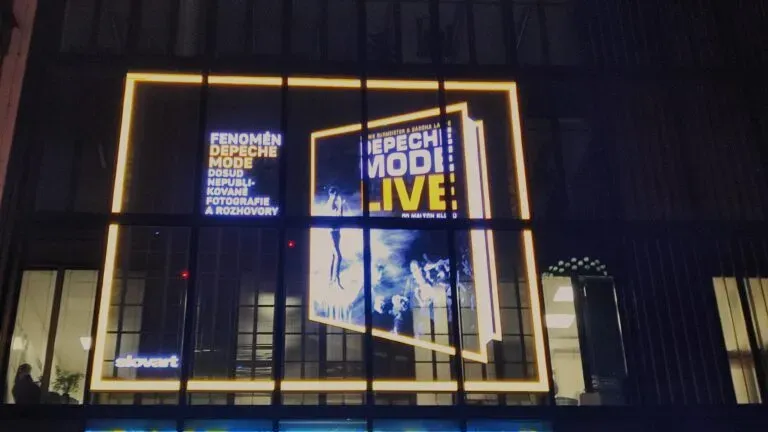Trends in display LCD and LED software in 2024
LED software: in the current world of display technologies, the rivalry between LED and LCD continues.
Typically, this competition goes beyond mere technical aspects, encompassing considerations for different project types and operating conditions. Experts from Treolan and AET, leveraging equipment available in their showroom and a broad selection of LED screens and LCD displays in stock, have conducted a detailed analysis of the advantages and disadvantages of both technologies.
The study examined the technical specifications of LED and LCD displays, their operational parameters, and their optimal application areas. Particular attention was given to the economic aspects of choosing between LED and LCD, as well as to the prospects for their future development. Additionally, current issues regarding the upgrade of existing systems were discussed, including replacing traditional LCD video walls with modern LED screens. Specialized LED software is used for this purpose, allowing for screen adjustments based on various conditions.
First and foremost, it is worth noting that LED screens are indeed replacing LCD panels in several segments, especially when it comes to large-format installations or outdoor LED screens. For projects requiring large-screen displays, LED solutions are often more practical from both a technical and economic standpoint. However, in terms of cost per unit area, LCD panels still hold a price advantage.
One of the key reasons for LCD’s continued presence in the market is its technological maturity. This technology has been available for over 10-15 years, making it well-studied and familiar to most specialists and users. Many projects, especially long-term ones, are initially developed using LCD displays, with implementation often spanning several years.
Applications of display technologies
LCD remains an optimal and often irreplaceable choice for certain tasks. For instance, LCD panels provide high image clarity on relatively small screens, which is essential for office spaces, small conference rooms, and other areas where high-quality information display is needed at close distances.
Interactive panels occupy a special niche, requiring multi-touch capability with high precision recognition. At the current stage of technology development, LCD holds a significant advantage over LED in this area.
However, the situation shifts when it comes to video walls with panels of 55 inches and larger, starting from a 2×2 configuration. In this segment, LED screens become competitive and are often a more cost-effective, appealing, and straightforward solution.
It is important to note that the choice between LCD and LED depends not only on technical specifications but also on the specific project requirements. For example, LED screens have a clear advantage for creating a seamless large-sized image. On the other hand, in office environments, where high clarity at close range is important, LCD panels may be the optimal option.
Operation and serviceability
One of the main advantages of LED screens is the stability of their performance over time. Unlike LCD panels, which may lose calibration, experience color shift, or backlight burn-in over time, LED screens maintain stable operation over extended periods. Once initially set up and calibrated, an LED screen can operate for years without noticeable degradation in image quality.
Another important aspect is serviceability. If an LCD panel within a video wall (for example, a 55-inch diagonal panel) is damaged, it requires the replacement of the entire panel or at least the matrix, which can be as costly as buying a new panel. This not only increases maintenance costs but can also result in noticeable differences in image quality between new and older panels.
Unlike this, in the event of damage to an LED screen module, restoration is significantly simpler and more economical. Only the damaged module, which is relatively small, needs to be replaced. Such a repair can be done quickly, using spare parts from the ZIP kit. After replacement and calibration, the module fully restores the screen’s functionality without visible differences from its original state.
This feature of LED technology is especially crucial for facilities with continuous operating cycles, where equipment downtime is undesirable. The speed and simplicity of LED screen repairs help minimize downtime and maintain high-quality information display.
Moreover, LED screens generally have a longer lifespan than LCD panels, which, in the long term, can offset their higher initial cost. Specialized software for LED screens is often used for convenient configuration and image monitoring, ensuring color accuracy and maintaining image quality in digital advertising systems or other large displays.
All-in-one LED solutions
Recently, the display technology market has seen a rise in the popularity of all-in-one solutions based on LED technology. These are integrated systems ranging from 108 to 220 inches, which raises questions about the feasibility of comparing them with traditional LCD panels and video walls.
When choosing between all-in-one LED solutions and LCD panels, it’s important to consider several key factors:
– Screen size: For screens under 130 inches, LCD technology often proves to be the better option. This is due to two main reasons: (a) resolution — for instance, 98-inch LCD panels can achieve 4K resolution, providing a much higher pixel density than LED screens of similar size; (b) cost — in this size range, LCD solutions are generally more cost-effective.
– Integration and ease of installation: All-in-one LED solutions have the advantage of easier installation and integration since they are a single system. This can be particularly appealing for customers who lack specialized technical staff.
– Image quality at close range: LCD panels traditionally provide better image quality for close-range viewing, which is important for office spaces and conference rooms.
– Seamless image: All-in-one LED solutions offer a completely seamless image, which can be critical for certain applications, especially in DOOH advertising and presentations.
– Energy efficiency and heat dissipation: LED technology is typically more energy-efficient and has better heat dissipation properties, which can be an important factor for prolonged use.
Thus, the choice between all-in-one LED solutions and LCD panels depends on the specific requirements of the project. For screens up to 130 inches, LCD technology often remains a more desirable option due to its high resolution and cost-effectiveness. However, for larger screens and specific applications that require a seamless display or ease of installation, all-in-one LED solutions may prove superior.
With the right parameter selection, LED screens can deliver image quality that rivals LCD panels and, in some cases, even surpasses them. This makes LED solutions increasingly attractive for a wide range of applications, from small office installations to large video walls and DOOH (Digital Out-of-Home) advertising displays in DOOH networks. Using specialized software for DOOH and DOOH management, these solutions significantly expand the possibilities for interactive and digital advertising, meeting the needs of the modern market.
Image quality
The image quality and usability of a particular technology depend not only on resolution but also on factors such as white and black color quality, brightness, contrast, and the ability to perform precise calibration. Let’s compare these technologies from this perspective.
For instance, when comparing the quality of white color reproduction on LED and LCD screens, a number of significant differences can be observed, which can be crucial for certain applications.
LED technology shows certain advantages in white color rendering:
– Calibration flexibility: LED screens offer greater options for precise white color adjustments. This allows for achieving a natural, uniform white that is as close as possible to real.
– Calibration process: LED screens are relatively easy to calibrate using industrial cameras in controlled conditions (a dark room).
– Gamma adjustment: LED technology allows for accurate gamma curve adjustments, enabling the desired white shade to be achieved according to project requirements.
– Uniformity: Even when components from different production batches are used (though this is not recommended), LED screens exhibit minimal differences in white color reproduction.
On the other hand, LCD technology has certain limitations:
– Calibration complexity: The calibration process for LCD panels, especially in video walls, can be labor-intensive and does not always yield an ideal result.
– Non-uniformity: In video walls based on LCD panels, differences in white color reproduction between individual panels are often noticeable, which can manifest as “yellow” or tinted areas.
The use of a centralized video management system in LED technology projects ensures optimal color and brightness settings, enhancing image quality. This system enables stable, uniform color reproduction across screens of various sizes and configurations.
Installation
The complexity and cost of installation are important factors when choosing between LED and LCD technologies for large-format displays. This aspect often represents a significant portion of the total project budget and can influence the client’s choice.
When comparing the installation processes for LED and LCD screens, both similarities and differences emerge. On the one hand, installing LCD panels may seem simpler and more standardized. Universal mounts and brackets are available for most models, offering a certain level of flexibility and ease of installation. However, creating video walls with LCD panels presents challenges in alignment and ensuring precise thermal gaps between them, which can be a labor-intensive process.
On the other hand, LED screen installation has its own features. Typically, they are mounted on a standard frame made from structural aluminum profiles. This method provides structural stability and does not require additional gaps between cabinets and modules. LED panel manufacturers often supply the necessary aluminum profiles and guides with the screen, simplifying the installation process and reducing additional costs.
It is important to note that high-quality mounts for premium LCD panels can be more expensive than the structural profile used for LED screens. In some cases, this can make the overall installation cost of the LED solution more attractive.
In general, it can be concluded that the cost and complexity of installation are not decisive factors when choosing between LED and LCD technologies. Both options have their unique features, but ultimately, the difference in installation complexity and cost is not significant enough to be a determining criterion for selection.
Final comparison
LCD displays remain in demand in the following cases:
– Small meeting rooms with limited budgets: Here, LCD panels are still the optimal choice due to their affordability.
– Interactive solutions, especially in education: For educational purposes where a high-resolution interactive panel with multiple touch points is required, LCD displays remain indispensable.
– High resolution on a limited budget: In the next few years, projects requiring high resolution will likely continue to use LCD panels, as they remain more cost-effective compared to LED.
LED screens are essential for:
– Large sizes: When a large screen size is needed.
– Curved screen requirements: For projects that require custom-shaped displays.
– High brightness and seamlessness requirements: LED displays provide high brightness and a completely seamless image.
Thus, the choice between LED and LCD technologies depends on specific needs and operating conditions. For projects requiring large screens, high brightness, and durability, LED solutions are the optimal choice due to their technical and economic advantages. At the same time, LCD panels retain their place in the market due to their technological maturity, affordability, and high image quality on smaller screens. Each technology has its unique benefits, and the choice between them should be based on the specific requirements of the project, budget, and operating conditions.
Advision — Content Management System for remote management and media planning of broadcast video and audio content. We help offline businesses and advertising companies automate workflows and implement a robust Digital Signage infrastructure using our proprietary software and hardware solutions.
Contact us, and we will help you implement the most modern technologies to solve your problems!
Share the news




















